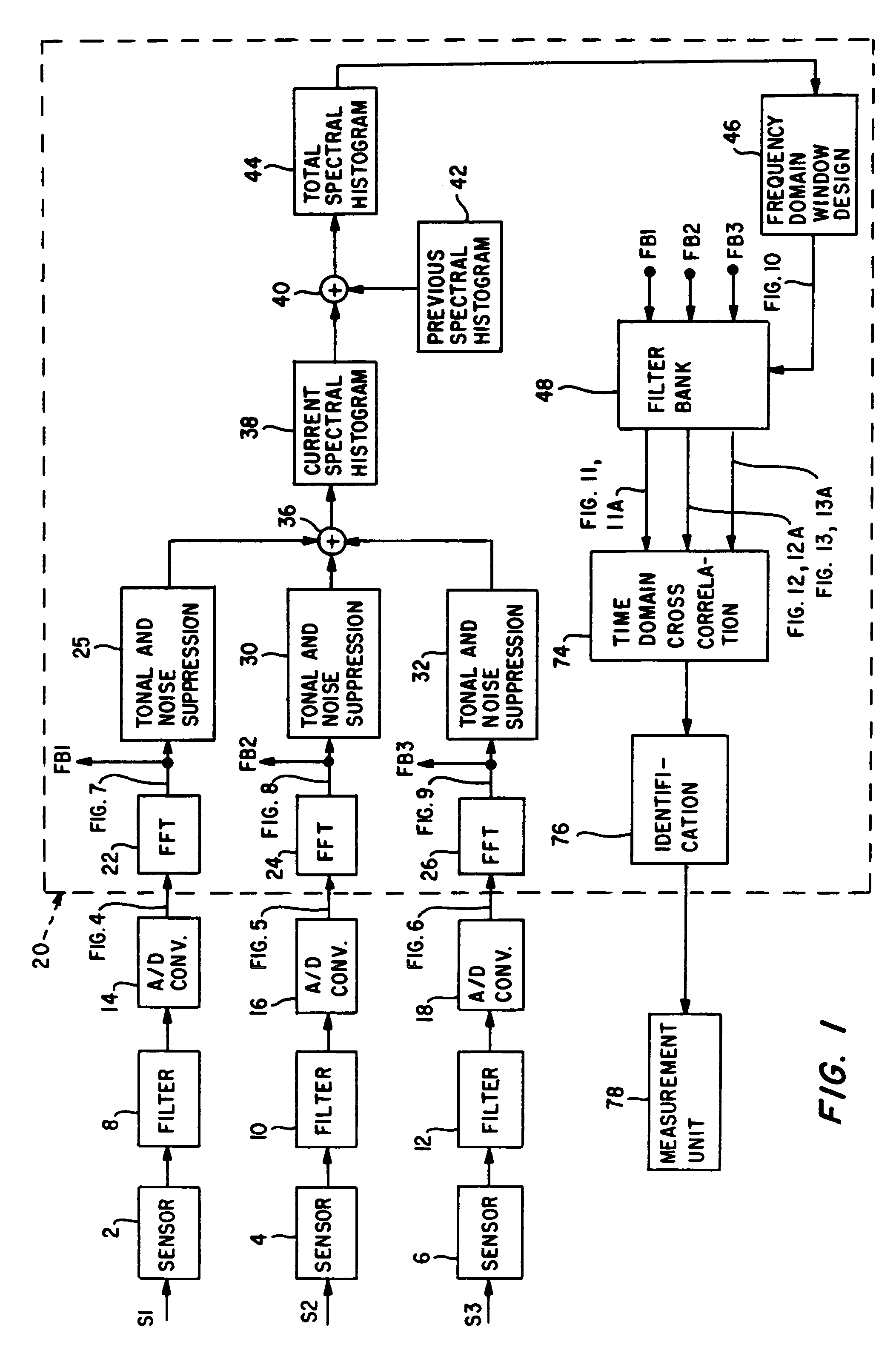Method for detecting emitted acoustic signals including signal to noise ratio enhancement
a technology of emitted acoustic signals and enhancement methods, applied in the field of detecting emitted acoustic signals including signal to noise ratio enhancement, can solve the problems of interfere with the performance of acoustic receivers, prior art signal models and detection methods have not performed satisfactorily when applied to detecting, and many efforts have not addressed important practical problems, to achieve the effect signal to noise ratio, and enhancement of signal to noise ratio
- Summary
- Abstract
- Description
- Claims
- Application Information
AI Technical Summary
Benefits of technology
Problems solved by technology
Method used
Image
Examples
Embodiment Construction
[0016]With reference to FIG. 1, a plurality of emitted acoustic signals, shown for purposes of illustration as three in number, are designated as S1, S2 and S3. Signals S1, S2 and S3 are short, transient pulse modulated signals emitted from a signal source such as, for example, an active sonar source. Signals S1, S2 and S3 are sensed by sensors 2, 4 and 6, respectively, which provide corresponding analog output acoustic signals.
[0017]The analog output acoustic signals from sensors 2, 4 and 6 are filtered by filters 8, 10 and 12, respectively. Filters 8, 10 and 12 are anti-aliasing low pass filters and provide band selected / limited output signals which are digitized by analog to digital (A / D) converters 14, 16 and 18, respectively. The digitized signals provided by A / D converters 14, 16 and 18 are graphically represented in FIGS. 4, 5 and 6, respectively. In this regard, reference is made to FIG. 4 which illustrates the self-noise, transient portion of the digitized signals. The digi...
PUM
 Login to View More
Login to View More Abstract
Description
Claims
Application Information
 Login to View More
Login to View More - R&D
- Intellectual Property
- Life Sciences
- Materials
- Tech Scout
- Unparalleled Data Quality
- Higher Quality Content
- 60% Fewer Hallucinations
Browse by: Latest US Patents, China's latest patents, Technical Efficacy Thesaurus, Application Domain, Technology Topic, Popular Technical Reports.
© 2025 PatSnap. All rights reserved.Legal|Privacy policy|Modern Slavery Act Transparency Statement|Sitemap|About US| Contact US: help@patsnap.com



